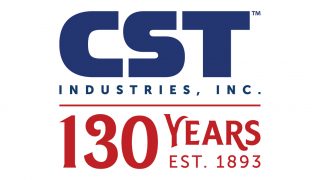When buying a water storage tank, the configuration and selection process often is something that needs to be done in the early stages of project design. To apply for and secure funding that may be available, timing of construction and overall project costs will play a factor in the determination. Because many municipalities have a single source of water storage, the tank design plays a crucial role in meeting the current and future needs of a community.
Some of the key details essential to the ultimate selection of the tank configuration process are an assessment of community demands for current and anticipated water supply, site conditions, pressure requirements, long-term maintenance, ease of access and overall costs.
There are three types of liquid storage tanks available that are considered for municipal water storage applications: glass-coated bolted steel, welded painted steel and concrete.
1. Design & Configurations
Standpipes, reservoirs and composite elevated tank (CET) designs are the different types of configurations used when selecting glass-coated bolted steel tanks. Standpipes are tanks where the water is elevated in a tall column to achieve gravity-fed pressure, which is required to properly feed the system. The tank height is greater than the tank diameter. The elevation of the water is accomplished by storing the required “water on top of water.” Standpipe height usually does not exceed 140 ft.
The most common configuration used for water storage is the reservoir. Reservoirs have a greater diameter than height and can be used with a pumping system or can be gravity fed. The width of these tanks can reach 250 ft with capacities up to 6 million gal. Similar to standpipes, the CET design is used in applications where height is used to achieve the head pressure needed to properly operate the system. The CET column is constructed in a hollow concrete pedestal on which the tank is then built. Structural rebar and steel embedded in the concrete reinforced walls that can exceed 10 in. thick and a top cap of concrete 4 ft thick.
There is plenty of space offered in the interior of the concrete pedestal for municipal maintenance equipment, pump stations, office space and other uses. The CET design does not have height restrictions and capacity can be as great as 1.5 million gal.
Depending on the diameter, snow loads and other factors, the roof of glass-bolted tanks can vary. They can be a free-span aluminum geodesic dome, consisting of panels mounted on a rigid structural frame, or the same glass-fused-to-steel material.
The tank floors usually are constructed with reinforced concrete or they can be glass-coated panels depending on site and design conditions.
2. Manufacturing Process
The technology and manufacturing process of this equipment sets these tanks apart from painted steel or concrete structures. When using the factory manufacturing process, the uncontrolled variables are eliminated, unlike field manufactured products such as painted steel or concrete tanks. Worker experience and extreme climatic environmental conditions that are proven to have a significant effect on in-field manufactured products have minimal effect on the glassing process. In addition, the tanks can be erected year-round as the manufacturing is completed in the factory and only the assembly of the components is required in the field.
3. Coating
All storage tanks have a coating. The coatings available today consist of either paint, concrete or glass. The impermeability and features of glass offer advantages.
The glass coating process begins with a glass frit that is mixed with other minerals and water to create a liquid slurry. This glass slurry is then robotically sprayed at precise amounts and thicknesses onto previously cut and rolled, punched, grit-blasted and cleaned steel sheet panels. Companies like CST run panels through a furnace at 1500° F. This heat melts the silica glass slip into the surface of the grit- blasted steel. This completes the mechanical bond, as well as the chemical bond between the steel and the silica glass.
Different coatings that are available for other tanks rely on a mechanical bond of the coating to the underlying material. The chemical bond strength is many times the holding strength of the conventional mechanical bond and prevents any undercutting of the coating, which can allow spreading of corrosion on the primary steel material. This benefit can best be explained by imagining a scratch on an automobile. Because that coating only has a mechanical bond, if the steel is exposed, corrosion will occur. Left untreated this corrosion will expand and creep beneath the surrounding painted surface and compromise the remaining coating.
This often is witnessed with raised bubbles, spreading rust and weakened substrate. The chemical bond of the glass-fused-to-steel coating prevents this spreading of corrosion in the event the coating were compromised.
With the goal of making the storage tanks as maintenance free as possible, companies like CST manufacture rounded sheet edges to exact radii to ensure adherence of the glass for complete encapsulation on all four sides of the sheet.
4. Tank Construction
A jacking system is used when erecting a glass-coated bolted steel storage tank. Once the starter sheet (bottom ring) is either embedded into the concrete foundation or constructed utilizing a glass-fused-to-steel floor design, the top ring of the tank is constructed on the jacks. The roof of the tank then is erected and the ring and roof are jacked up. Each additional ring is then assembled below the top ring by bolting the sheets together and applying a urethane sealant between the seams.
Tanks are assembled from the top down allowing for a safer and faster construction environment. The erection process normally is completed within a week or two, which saves costs to the owner if prevailing wages for onsite labor are being used. Additionally, the manufacturer requires that all building crews be factory-trained and certified in the erection process, ensuring quality control in the field.
5. Maintenance/Life Time Value
Glass-coated bolted steel tanks have a long lifetime. Glass coating never needs painting because it is permanent. Glass-coated tanks often are placed in areas, where long-term pleasing visual appearance is sought. The budgeted dollars that may be used to repaint a painted tank or repair aged concrete can be saved and funneled to other projects in a municipality.
6. Flexibility
The bolted design and erection of this product yields flexibility. Because manufacturing is completed in a factory, large staging areas needed when a product is manufactured onsite are eliminated. The construction of the tank typically can be completed with a cleared area of roughly 6 to 10 ft around the tank diameter. This small footprint can save thousands of dollars on the overall project beyond the price of the tank itself. The panels themselves can be hand-carried and easily assembled without cranes or special equipment, allowing this tank to be installed in many locations that would be impossible for other tank types.
7. Expandability
The glass-coated bolted tank design allows the tanks to be vertically expanded. If a community or industry experiences growth and additional capacity is necessary, the tanks’ jacking process allows the end-user to gain capacity quickly and cost-effectively. The factory-trained professional building crew unbolts the bottom ring from the original starter sheet, jacks the tank up and adds the number of rings necessary to achieve the new capacity. When these tanks are expanded, there is no difference in appearance between the original panels and the new panels.
Conclusion
Initial construction costs, anticipated life and long-term maintenance costs are significant factors relative to the various tank designs and materials available today. The long-term maintenance costs and life cycle during a tank evaluation all must be considered when selecting the appropriate product for a specific project.
Because project financing can vary depending on several factors, a complete analysis of initial costs and, lower maintenance should help a community decide which type of product is best suited for its needs.
About CST
CST is the largest dome and storage tank manufacturer in the world. CST’s global network includes manufacturing facilities and technical design centers and multiple regional sales offices that are located throughout North America and the United Kingdom. International offices are in Argentina, Australia, Brazil, India, Japan, Malaysia, Mexico, Singapore, United Kingdom, United Arab Emirates and Vietnam. Currently, more than 350,000 storage tanks and 19,000 covers have been installed in 125 countries throughout the world.

